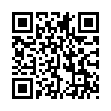|
This article is cited in 2 scientific papers (total in 2 papers)
Dynamical systems with discontinuous solutions and problems with unbounded derivatives
B. M. Millera, E. Ya. Rubinovichb
a A. A. Kharkevich Institute for Information Transmission
Problems RAS, 19 B. Karetny, GSP-4, Moscow, 127994
b V. A. Trapeznikov Institute of Control Sciences RAS, 65, Profsoyuznaya st., Moscow, 117997
Abstract:
V. I. Gurman suggested a description of discontinuous solutions in
terms of systems with unbounded derivatives. The idea was in the
usage of an auxiliary system of ordinary differential equations
including the recession cone of the velocities set. It was useful
for inclusion discontinuous functions into the set of admissible
solutions, however, it became clear later that such a description is
not only correct, but it gives also the unique in some sense
representation of solutions which guaranties the existence of a
solution for corresponding variational problems.
In this article, we describe the subsequent development of this
methodology for variational problems where the solutions
discontinuities appear naturally as a result of the impacts against
the rigid surfaces. We give an illustration of the singular
spatio-temporal transformation technique for problems of impact with
friction. As an example, we consider a system with the Painlevé
paradox, namely, a mathematical formalization of oblique impact,
where the contact law is described by a viscous-elastic Kelvin–Voigt
model, and the contact termination is defined as a moment when the
supporting force vanishes.
Keywords:
expansion of the solutions set, unbounded derivatives, singular spatio-temporal transformations, mechanical impacts.
Citation:
B. M. Miller, E. Ya. Rubinovich, “Dynamical systems with discontinuous solutions and problems with unbounded derivatives”, Bulletin of Irkutsk State University. Series Mathematics, 19 (2017), 136–149
Linking options:
https://www.mathnet.ru/eng/iigum293 https://www.mathnet.ru/eng/iigum/v19/p136
|
|



 Contact us:
Contact us: Terms of Use
Terms of Use
 Registration to the website
Registration to the website Logotypes
Logotypes








 Citation in format
Citation in format 
